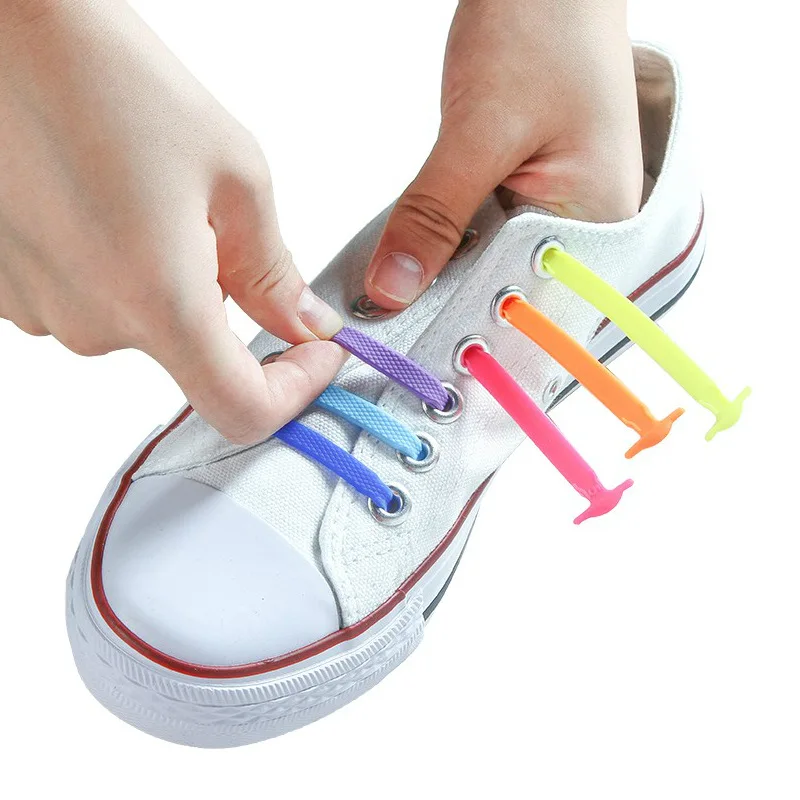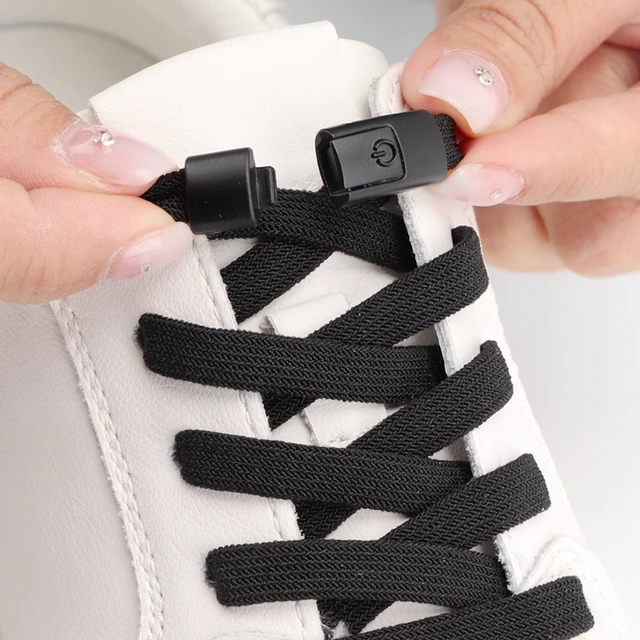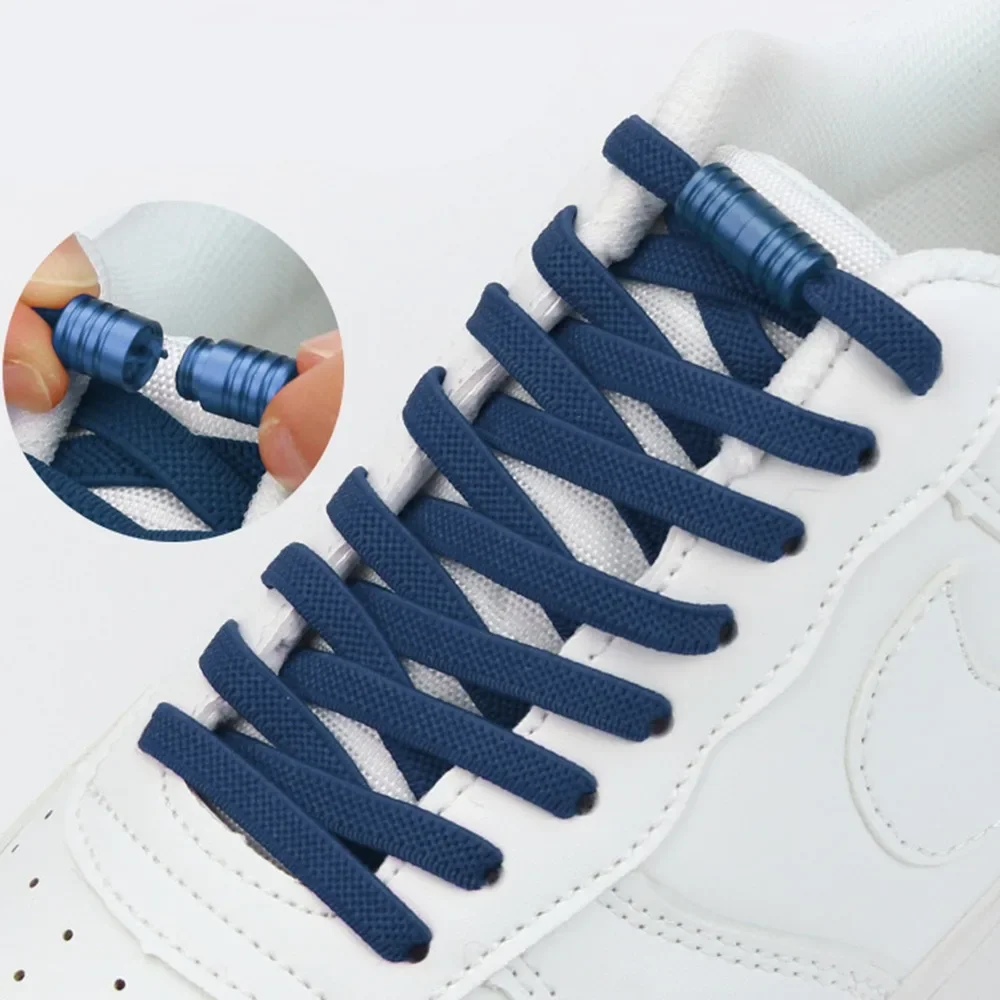Lacing your shoes without the hassle of traditional shoelaces is an innovative solution that has gained popularity among both kids and adults. Whether you’re engaged in sports, seeking comfort, or simply want to save time, no-tie shoelaces can be a game changer. This article delves into the various aspects of no-tie shoelaces, including different types, installation methods, benefits, and how to lace no tie shoelaces.
Understanding No Tie Shoelaces
What Are No Tie Shoelaces?
No tie shoelaces are elastic laces designed to keep your shoes securely fastened without the need for frequent tying and adjusting. These laces typically feature a locking mechanism that allows you to pull them tight and keep them in place, eliminating the need for conventional knots.
Types of No Tie Shoelaces
When selecting no tie shoelaces, you will encounter various options that differ in functionality, aesthetics, and material. Let’s explore the primary types.
Elastic Laces
Elastic laces are a popular choice due to their inherent stretchiness. They allow for easy slipping on and off and provide a snug fit that conforms to the shape of your foot. They are ideal for athletic shoes and everyday wear.
Magnetic Laces
Magnetic laces use a unique locking mechanism that secures the laces in place with magnets. These are particularly useful for those with mobility issues or anyone who wants a fuss-free shoe-tying experience.
Clip-On Laces
Clip-on laces comprise an adaptable system where the lace length can be modified and clipped into place. Whether you need a loose or tight fit, this option gives you the ability to customize as per your comfort.
Material Matters
The durability and comfort of no tie shoelaces often depend on the material used. Common materials include:
- Nylon: Known for its durability and resistance to wear and tear, nylon laces are ideal for active use.
- Polyester: Offering similar durability, polyester laces often come at a lower cost but might not be as stretchy as nylon.
- Cotton: While less durable, cotton laces provide comfort and aesthetic appeal, adding a classic look to your shoes.
Benefits of Using No Tie Shoelaces
Choosing to switch to no tie shoelaces presents several benefits that enhance your footwear experience.
Convenience and Time-Saving
No tie shoelaces are fundamentally designed for those who want an easy and fast way to wear shoes. You no longer need to stop and tie your shoelaces, making them particularly handy for busy mornings or when you’re running late.
Enhanced Comfort
The elastic nature of these laces allows for a comfortable fit. They adjust as you move, providing support without being too tight. They also reduce the chances of your shoes becoming too loose during activities, minimizing the risk of blisters and discomfort.
Great for Kids and Seniors
Kids often struggle with traditional shoelaces, and seniors may have difficulties due to dexterity issues. No tie shoelaces provide an easy solution, allowing children and the elderly to wear shoes independently and confidently.
Versatile Styles
No tie shoelaces come in various colors and designs, making them a stylish option for any shoe type. You can choose a bold color to make a fashion statement or a muted tone for a more professional look.
Increased Safety
Loose shoelaces can be a tripping hazard, especially during sports or brisk walks. No tie shoelaces eliminate this risk, making them a safe choice for everyone.
How to lace no tie shoelaces
Installing no tie shoelaces may vary slightly depending on the type you choose. Below, we outline a general guide to help you lace your shoes effectively.
Step 1: Choose Your Laces
Before you dive in, ensure you have the right pair of no tie shoelaces for your shoes. Measure the length required based on the number of eyelets on your shoe.
Step 2: Remove Existing Laces
Remove the traditional shoelaces currently in your shoes. This will prepare the eyelets for the new no tie shoelaces.
Step 3: Thread the Laces
Start by threading the no tie laces through the bottom eyelets. If you’re using elastic laces, go straight across. If you’re using magnetic or clip-on laces, follow the manufacturer’s instructions for threading.
For Elastic Laces
- Insert the lace from the outside of the shoe through the bottom eyelet, pulling it until you’ve got equal lengths on both sides.
- Cross the laces and thread them through the next eyelets, continuing this pattern up to the top eyelet.
For Magnetic or Clip-On Laces
- Follow similar steps but ensure you leave enough slack to accommodate the locking mechanism for securing the laces.
Step 4: Lock the Laces in Place
Once all laces are threaded, you can adjust the tension to your comfort level. For elastic laces, pull until they feel snug, then use the locking mechanism to secure them. Magnetic laces will require you to attach the magnetic components, while clip-on laces will need to be clipped securely in place.
Step 5: Trim Excess Laces
If your no tie laces come with extra length, you might want to trim them down for aesthetics. Always ensure you maintain enough length for proper fit adjustment.
Step 6: Final Adjustments
After installation, take the time to walk around and assess the fit. If the laces feel too tight or too loose, just readjust the tension until you find the perfect balance.
Tips for Choosing the Right No Tie Shoelaces
While no tie shoelaces are a convenient choice for many, selecting the right type can enhance your experience. Here are some tips:
Assess Your Footwear
Consider the types of shoes you plan to use no tie shoelaces with. Athletic shoes often benefit from elastic laces, while dress shoes may look better with a subtle, classic design.
Look for Quality
Always choose high-quality materials to ensure durability. This will save you money in the long run, as cheaper options may wear out faster and require replacement.
Check Length Options
No tie shoelaces come in various lengths. Always measure your shoes to find the most suitable length to avoid unnecessary slack or excess tightening.
Read Customer Reviews
Before making a purchase, check online reviews and ratings. Customer feedback can provide insights into comfort, durability, and ease of use, helping you make an informed decision.
Consider Style
No tie shoelaces come in an array of colors and designs. Select a color that complements your shoes or adds a pop of personality to your style.
Look for Adjustability
If your foot size varies due to swelling or other factors, consider no tie laces that allow for easy adjustments. This flexibility can make a significant difference in comfort throughout the day.
Common Misconceptions
Despite their growing popularity, some misconceptions persist about no tie shoelaces. Let’s clarify a few:
They’re Just for Kids
While no tie shoelaces are great for children, they are equally beneficial for adults, athletes, and the elderly. The list of users has expanded greatly due to the versatility and benefits they offer.
They Don’t Hold Well
Many people believe that no tie shoelaces cannot hold securely like traditional laces. However, quality no tie options come equipped with locking mechanisms that provide a secure fit.
They’re Only for Casual Wear
While they work perfectly with casual shoes, no tie shoelaces can also be used with formal footwear, providing a chic yet functional solution.
They’re Too Complicated to Install
Some may presume that installing these laces requires technical skills. The reality is that with the right guide, anyone can install no tie shoelaces in minutes.
 Maintenance Tips for No Tie Shoelaces
Maintenance Tips for No Tie Shoelaces
Taking care of your no tie shoelaces can ensure they last and maintain their functionality over time. Here are some simple tips to keep in mind:
Regular Checks
Periodically check the locking mechanisms and connections to make sure everything is in working order. Make adjustments as necessary to avoid any discomfort.
Clean Them Properly
Depending on the material, no tie laces can collect dirt and grime. Use a mild detergent and water to clean them, making sure to avoid harsh chemicals that can degrade the material.
Store Them Correctly
When not in use, store your shoes in a dry, cool place. Avoid areas where they can be crushed or deformed, as this can impact the fit and function of the laces.
Replace When Necessary
Pay attention to wear and tear. If the laces become frayed or no longer hold securely, it might be time for a replacement. Regularly replacing worn-out laces can maintain the overall performance of your shoes.
Conclusion: how to lace no tie shoelaces
Switching to no tie shoelaces can make your life easier and more comfortable. With various types available, you’re sure to find a pair that fits both your style and functionality needs. Remember that knowing how to lace no tie shoelaces is just as important as choosing the right type. Enjoy the freedom and convenience these innovative laces provide, whether you’re getting ready for a busy day at work, heading out for a workout, or simply want to minimize hassle in your routine. Embrace the change—your feet will thank you!

